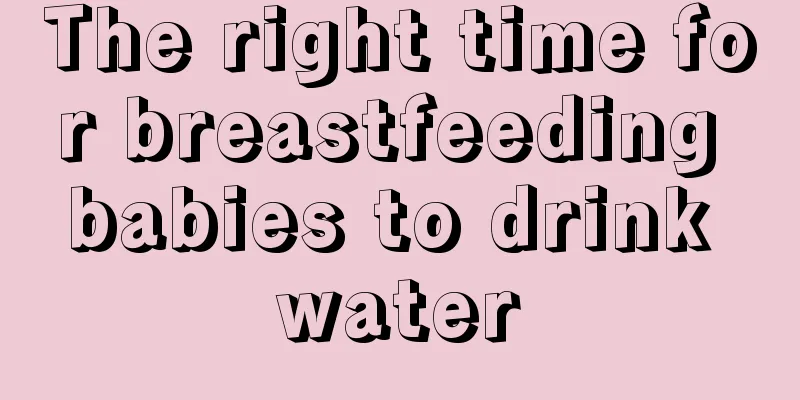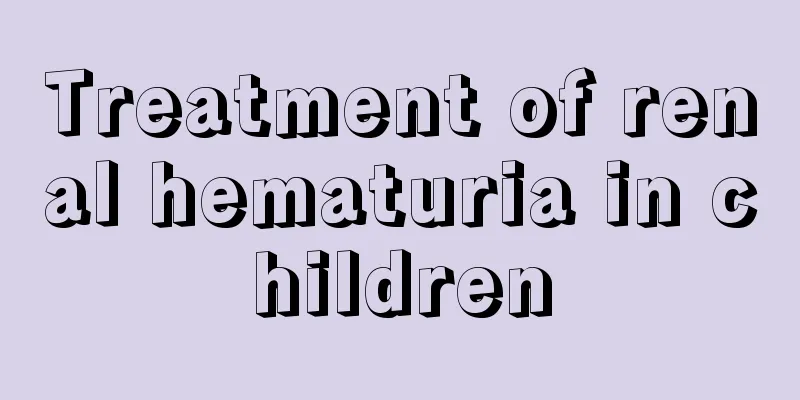How to check for rapid breathing in babies

|
It is relatively rare for a baby to have shortness of breath in life, unless there is something wrong with the baby's lungs. The baby's rapid breathing may be caused by a lung infection due to a cough or cold, or the baby may suffer from some heart disease. Therefore, we should understand the cause of the baby's rapid breathing so that we can analyze what disease causes it. If you experience shortness of breath even when you are not doing strenuous exercise, it may be due to lack of oxygen, which could be tracheitis or pneumonia. To determine whether the child has pneumonia, we also need to see whether the child has cough, wheezing, and difficulty breathing. Coughing and wheezing caused by colds and bronchitis are mostly paroxysmal and generally do not cause difficulty breathing. Children with pneumonia mostly have fever symptoms, with body temperature above 38°C, which lasts for two or three days. Antipyretics can only temporarily lower the body temperature for a while, and it will rise again soon. Although children may have fever when they have a cold, the temperature is mostly below 38°C and lasts for a short time, so the effect of antipyretics is more obvious. But at the same time, we should also be wary of pneumonia in children without fever. Babies with pneumonia may have a very high temperature, but they may also not have a fever, or even have a temperature lower than normal. The duration of fever cannot be used as a basis for diagnosing pneumonia. Some babies develop pneumonia after only two days of fever, while some babies do not develop pneumonia even after a week of fever. Therefore, fever alone cannot determine whether a child has pneumonia. It also requires a combination of other aspects to determine. Second, look at the cough and breathing to determine whether the child has pneumonia. You also need to see whether the child has cough, wheezing, and difficulty breathing. Coughing and wheezing caused by colds and bronchitis are mostly paroxysmal and generally do not cause difficulty breathing. More than 50% of the pathogens of viral pneumonia are respiratory syncytial virus, which accounts for one-third of all pediatric pneumonia hospitalizations. It often occurs in winter and spring. After 2-3 days, the cough worsens and the breathing becomes rapid and shallow, reaching 60-100 times per minute. The most prominent symptoms are wheezing, shortness of breath, and prolonged exhalation. The sound of wheezing sometimes does not require a stethoscope and can be heard as long as you get close to the child. The child is in great pain. Lobar pneumonia refers to inflammation and complete consolidation of one or more lobes of the lung, and the pathogen is Streptococcus pneumoniae. Bacterial pneumonia accounts for about 10%-30% of all pneumonia cases in children. Typical symptoms after catching a cold include chills, high fever, chest pain, cough, rusty sputum, difficulty breathing, and bluish face and lips. Third, look at the mental state. In order to detect pneumonia in children in time, careful mothers should also pay attention to the mental state of their children. If a child is in good spirits, playful and cheerful while having a fever, cough and wheezing, it indicates that the possibility of him having pneumonia is very small. On the contrary, if the child is in a poor mental state, has blue lips, is irritable, crying or drowsy, has convulsions, and a few children may even have delirium, it means that the child is more seriously ill and is more likely to have pneumonia. In the early stages of pneumonia, a child may not show any obvious changes in spirit, or may be in a poor mental state. 4. Look at appetite. Appetite will decrease significantly when children have pneumonia. Children with pneumonia will not eat or will cry and be restless when they are fed. If it is confirmed that the child has pneumonia, the child should continue to be breastfed and fed, and should drink more soup. If the child has a decreased appetite, he should eat small meals frequently. Breastfeeding babies should increase the number of feedings per day to enhance nutrition and physical strength. This article introduces in detail the causes of baby's shortness of breath and methods of diagnosing the disease. I hope mothers can remember some of it. During pregnancy, mothers should learn more about pregnancy and parenting knowledge, which will help you prevent some common diseases and take better care of your baby. |
<<: How to treat Mycoplasma pneumoniae infection in children?
>>: Reasons why children's palms and soles sweat
Recommend
How to treat children with autism?
In recent years, people have become more and more...
How to treat hemolytic anemia in babies
Everyone must be familiar with anemia, and there ...
Four-year-old child always likes to blink
Many strange behaviors of children in life concer...
How to diagnose cerebral palsy in children
Cerebral palsy in children can actually be so ser...
What to do if your child has a stuffy nose
Children will encounter various diseases as they ...
What is the process of infant vision development?
When babies are growing, there are many issues to...
What should I do if my baby is vomiting, having diarrhea and having a fever?
It is a common situation for babies to vomit, hav...
What to do if your baby has acute diarrhea
In case of acute diarrhea in babies, it is likely...
Will a scratch on a child's face leave a scar?
No matter it is a boy or a girl, if there is a ch...
What should I do if my one-year-old baby coughs while sleeping?
A baby's cough is the most annoying thing for...
The difference between oral thrush and oral canker sores
Children are the core of every family. Any slight...
How to treat baby tinea versicolor
Tinea versicolor, commonly known as tinea versico...
How to treat herpes in children's mouth?
If a child develops herpetic oral ulcers, it will...
The reason why baby has red spots in the eyes
Now the air quality outside is getting worse and ...
Why are the sides of the baby's nose blue?
Some babies have problems with their noses, so th...









